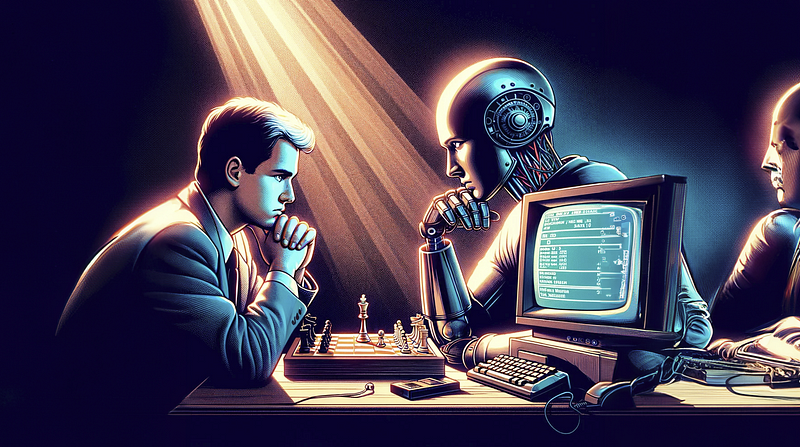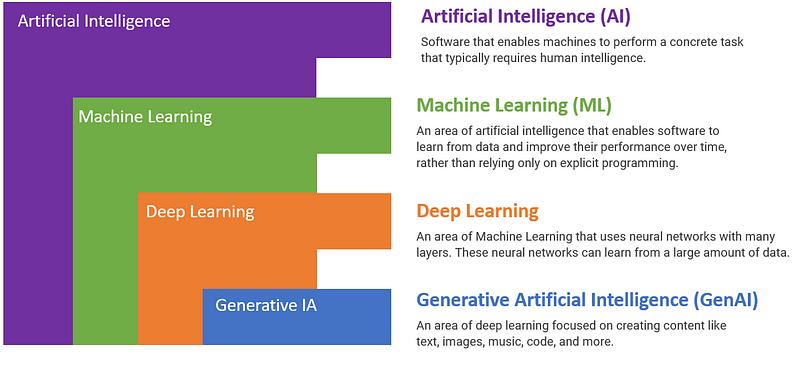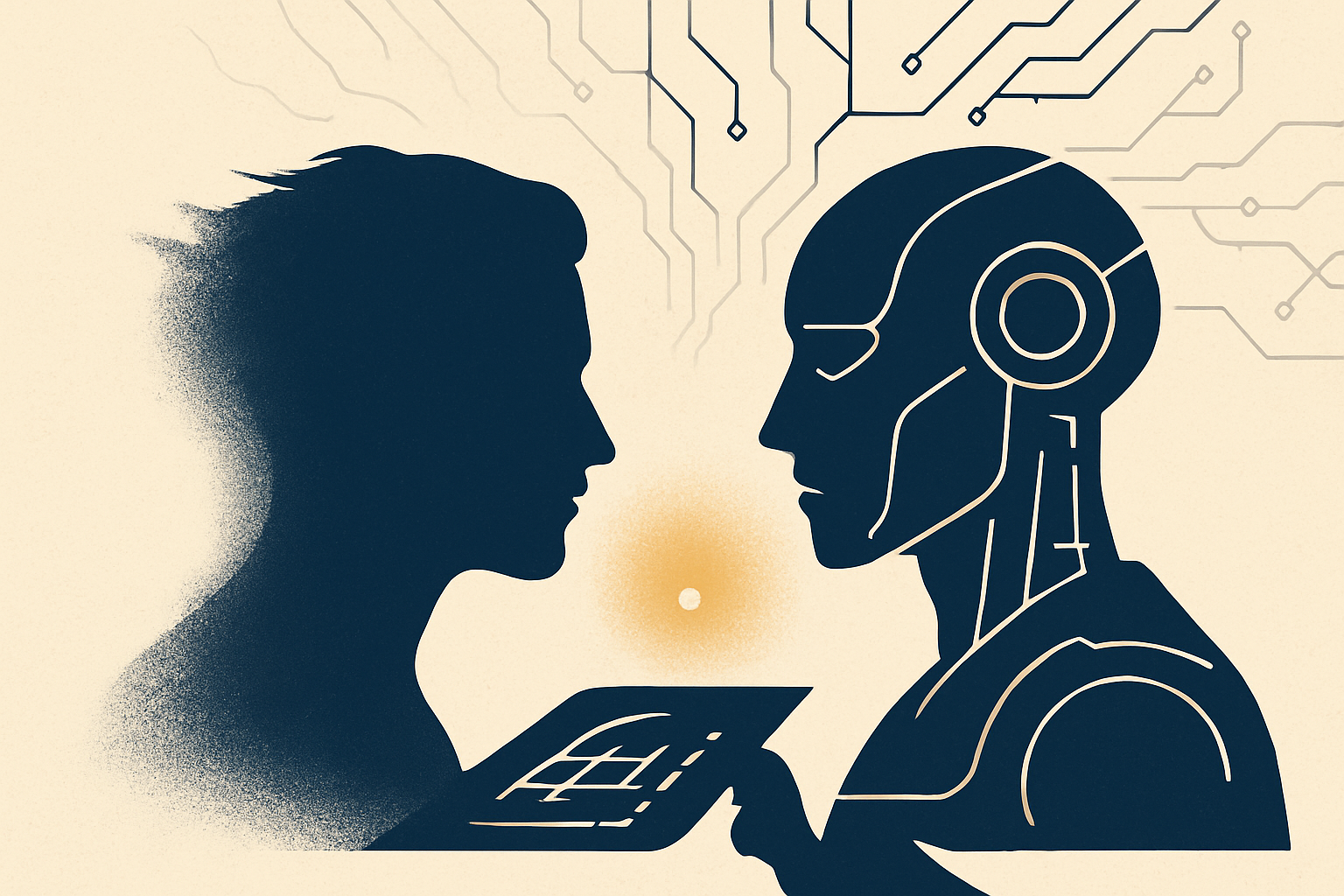From Kasparov to ChatGPT: Transforming Technology and Life
Get ready for a journey tour through Artificial Intelligence’s (AI) most exciting moments! We’ll use key historical events to explain the most important AI concepts: machine learning, deep learning, and generative AI. From a chess showdown that turned heads in 1989 to today’s tech wonders, I hope you’re in and leaving a comment.
“AI will not replace people, but people using AI will replace those who don’t.”
What is Intelligence? 🧠
Intelligence is learning, understanding, and applying knowledge to interact and solve tasks and problems.
… and Artificial? 🤖
Made by humans through a manufacturing or synthetic process, not occurring naturally.
… so Artificial Intelligence is:
A human-created technology that learns, understands, and applies knowledge to interact and solve tasks and problems.

Artificial Intelligence
Imagine it’s 1989, and you’re watching a chess match. But it’s not just any match — the player is Gary Kasparov, a world champion, and his opponent? A computer named Deep Thought, one of the first AI chess players! Kasparov wins, but everyone is amazed at how well the computer played.
Machine Learning
Now that you’re shopping on Amazon in 2000, you start seeing suggestions like “Customers who bought this also bought…” That’s Amazon’s recommendation engine, a cool example of Machine Learning. It’s like a smart buddy who looks at your past shopping and what others have liked to suggest new things. This is also AI, but it’s learning from data to get better at helping you find what you’ll love.
Deep Learning
In 2017, the iPhone X brought a game-changer: Face ID, powered by Deep Learning. This technology smartly learns and recognizes your face, ensuring secure and easy access to your phone. It’s a prime example of Deep Learning, a specialized form of Machine Learning.
Deep Learning dives deeper into data analysis using neural networks that mimic the human brain. These networks’ multiple layers process information, allowing the system to learn complex patterns and make more accurate predictions. This differs from traditional Machine Learning, which often relies on simpler algorithms and less data processing.
Generative AI
2022, ChatGPT is an exemplary showcase of Generative AI. Unlike traditional AI systems that primarily analyze and interpret data, Generative AI leaps forward — it creates new, original content. In the case of ChatGPT, it uses its extensive training on diverse text data to generate responses, craft stories, or provide information on various topics.
This capability sets Generative AI apart from conventional Deep Learning. While Deep Learning excels in tasks like pattern recognition or data analysis, Generative AI uses its learned patterns to produce something new.
- Foundation Models: These are large-scale AI models trained on diverse data, serving as a base for various applications. They extend beyond language, encompassing tasks like image recognition.
- Large Language Models (LLMs): A subset of foundation models, LLMs like GPT-4 specialize in understanding and generating human language, useful in text completion, translation, and more.

💡 Takeaways
In the early 90s, a computer playing chess was a marvel of artificial intelligence. Fast forward to 2023, and AI has gone way beyond chess. It’s now powering self-driving cars, assisting in medical fields, and creating art. This evolution means AI playing chess isn’t as astonishing as it once was. Today, when people talk about AI bots, AI-generated images, videos, code, or songs, they usually refer to Generative AI.
Artificial Intelligence (AI): The broad field of creating smart machines for tasks requiring human intelligence. Examples: IBM’s Deep Thought in chess and OCR for detecting car number plates.
Machine Learning (ML): A subset of AI where machines learn from data to improve. Examples: Amazon’s recommendation engine and predictive text in messaging apps.
Deep Learning: A more advanced ML form for complex pattern recognition and decision-making. Examples: iPhone’s Face ID and advanced language translation tools.
Generative AI: Builds on AI/ML to create original content. Examples: ChatGPT’s conversation abilities and AI-generated images.
Your feedback is essential to me. If you enjoyed the reading,
please help me with a couple of claps or leave a comment. Thank you.

Stay Ahead Of The Curve
Subscribe for the Latest Insights on Leadership and Digital Transformation

Disclaimer: This post was created with the help of AI tools to improve efficiency, required hours of dedicated writing, and contains my experience in the field.





